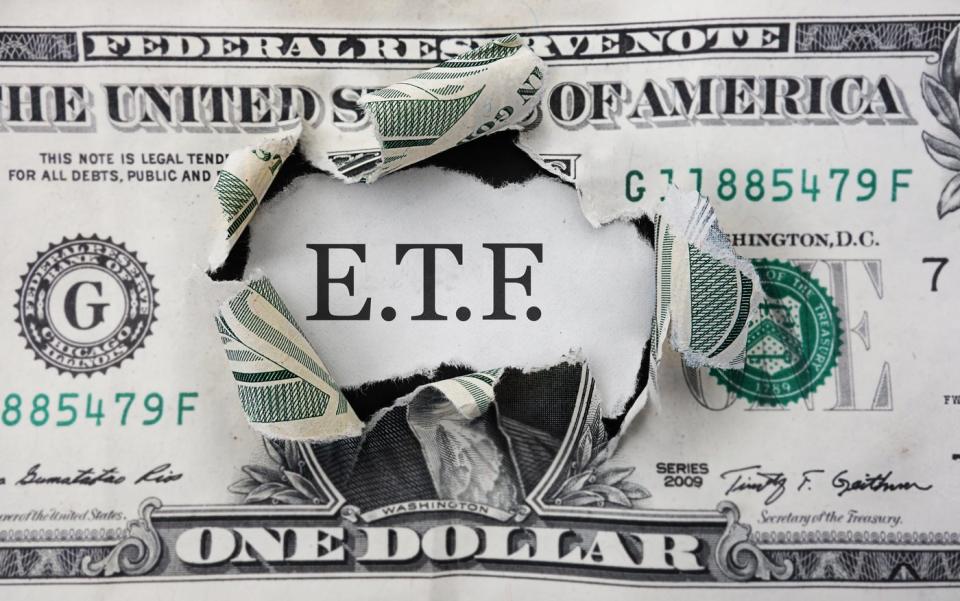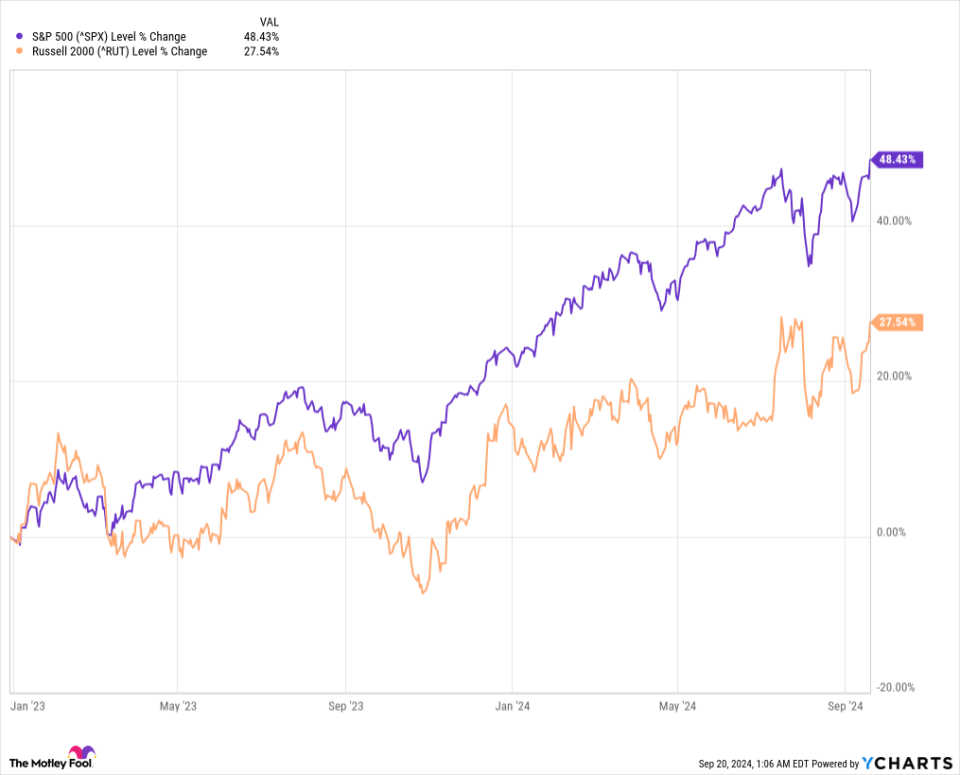This bull market is now nearly two years old, with no real indications that it is slowing down. In fact, it just got a significant boost from the Federal Reserve. The U.S. central bank last week lowered the federal funds rate by 50 basis points (0.5 percentage points), sparking a rally in the stock market: The S&P 500 jumped by 1.7% and touched a new all-time high, while the Nasdaq Composite surged by 2.5%.
The Fed’s pivot to a rate-cutting policy seemed to signal a new leg up in the bull market, giving investors a fresh incentive to pile into stocks.
If you’re looking for a good way to invest at any time, exchange-traded funds (ETFs) are a great option, in that they provide exposure to numerous stocks in a single investment. But if you’re looking for an ETF that’s well-designed to benefit from the Fed’s pivot, consider the iShares Russell 2000 Growth ETF (NYSEMKT: IWO).
The iShares Russell 2000 Growth ETF holds just over 1,100 small-cap stocks that are expected to grow at faster rates than the overall market. You can also buy one share of this little-followed ETF for less than $300.

Small-caps will rise
One thing that’s been unusual about the current bull market is that large-cap stocks have trounced small-cap stocks. Typically, small caps outperform in bull markets while large caps do better in bear markets and more uncertain times.
However, the artificial intelligence (AI) boom has been disproportionately benefiting tech giants, and as a result, investors have piled into many of the largest companies in the market while small caps have been left behind.
However, falling interest rates seem likely to spark a rotation into small-cap stocks. If that happens, the iShares Russell 2000 Growth ETF would benefit. Currently, the Russell 2000 Growth index that it tracks has a price-to-earnings ratio of just 23.8, which is lower than the S&P 500 at 27.8. That suggests that the S&P 500 trades at a 17% premium to the Russell 2000 Growth index, but that gap is likely to narrow as rates come down.
Lower interest rates favor small-cap companies because they’re more sensitive to the health of the overall economy and are more likely to benefit from cheap borrowing costs because they’re less likely to be profitable. Growth stocks have even more exposure to interest rates since the value of their earnings in the distant future goes up as interest rates fall, according to the discounted cash flow model.
While the healthcare sector accounts for the largest share of the ETF’s holdings at 26%, cyclical sectors including industrials, technology, consumer cyclical, financial services, and materials combine to make up 66% of its value.
Falling interest rates should also boost currently lagging areas of the economy such as housing, construction, and consumer discretionary.
The rotation could take time
Even though the Fed just lowered its benchmark interest rate, it’s still relatively elevated in the 4.75% to 5% zone, and it will take time for the central bank to bring it down. Members of the the Federal Open Market Committee expect to cut benchmark rates to between 4.25% and 4.5% by the end of 2024, and to between 3.25% and 3.5% by the end of 2025. Of course, those are just forecasts — the Fed’s actions will depend on how the real economy performs –but lower borrowing costs should favor the companies in the iShares Russell 2000 Growth ETF. Fed Chair Jerome Powell said this week the economy was in a good place, and that this rate cut was designed to keep it there.
If the U.S. economy continues to avoid a recession and keeps growing, the Russell 2000 ETF, with its diverse portfolio of small-cap growth stocks and its moderate valuation, looks poised to be a winner.
Should you invest $1,000 in iShares Trust – iShares Russell 2000 Growth ETF right now?
Before you buy stock in iShares Trust – iShares Russell 2000 Growth ETF, consider this:
The Motley Fool Stock Advisor analyst team just identified what they believe are the 10 best stocks for investors to buy now… and iShares Trust – iShares Russell 2000 Growth ETF wasn’t one of them. The 10 stocks that made the cut could produce monster returns in the coming years.
Consider when Nvidia made this list on April 15, 2005… if you invested $1,000 at the time of our recommendation, you’d have $710,860!*
Stock Advisor provides investors with an easy-to-follow blueprint for success, including guidance on building a portfolio, regular updates from analysts, and two new stock picks each month. The Stock Advisor service has more than quadrupled the return of S&P 500 since 2002*.
*Stock Advisor returns as of September 16, 2024
Jeremy Bowman has no position in any of the stocks mentioned. The Motley Fool has no position in any of the stocks mentioned. The Motley Fool has a disclosure policy.
1 No-Brainer Index Fund to Buy Right Now for Less Than $300 was originally published by The Motley Fool
Source Agencies


